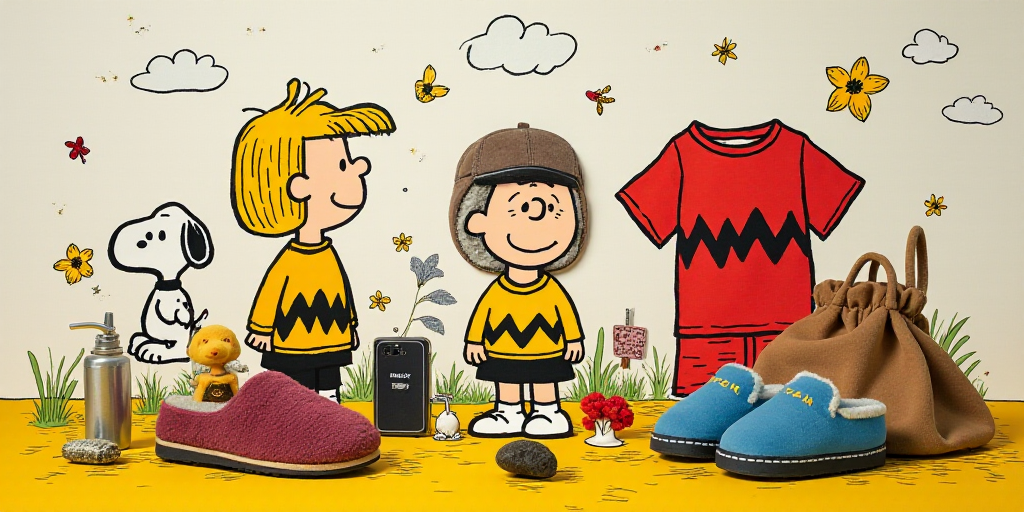Snoopy’s Global Presence and Brand Value
From the covers of Apple smartwatches to a line of cups and vessels at Starbucks, passing through clothing for various audiences and price points with visible alliances in brands like Lacoste, American Eagle, Levi’s, Vans, and H&M, Snoopy has become a protagonist in pop culture. At 75 years old, the character created by Charles M. Schulz not only maintains relevance but has experienced a new cycle of global fame in recent decades.
Snoopy’s Enduring Legacy
Snoopy first appeared in a publication on October 4, 1950, as Charlie Brown’s dog, just two days after the debut of the comic strip featuring his owner as the protagonist. Over seven decades later, Snoopy’s silhouette remains present, now adapted to digital platforms, nostalgia strategies, and a growing demand for emotional symbols that transcend generations.
- First appeared in a publication on October 4, 1950
- Appeared in various TV commercials during the 1960s
- Made a stable TV appearance jump with the series “The Charlie Brown and Snoopy Show” in the 1980s
- Now lives on streaming platforms and has approximately 22 million followers across Facebook, Instagram, X, TikTok, and YouTube
The Symbolic Value of Characters Like Snoopy in the Global Market
Maca Rotter, a licensing expert and CEO of La Panadería, explains the phenomenon surrounding Charlie Brown’s mascot: “It’s an intergenerational connection based on nostalgia but also on the need for emotionally secure messages… These characters maintain their essence and find new platforms to engage with the audience without forced adaptation.”
The phenomenon behind this figure is not unique; it’s part of emotional marketing, a strategy used by brands to create significant connections with consumers and influence their purchasing decisions.
Starbucks and the Power of Emotional Connections
One recent example of this phenomenon was Starbucks’ collaboration with Snoopy in March 2025. The strategy included an exclusive drink (Joe Kind Frappuccino), collectible items, and a narrative centered around kindness as a universal value. The campaign was deployed in 74 countries across more than 29,000 stores.
“We wanted to inspire small daily actions, not just sell products,” explains Georgina Cabral, Marketing Director of Starbucks Mexico. In Mexico, the response was immediate: there were lines starting early in the morning, even at airport stores.
“Snoopy projects values like tenderness, gratitude, and friendship.” In a context where many people feel lonely, his presence generates connection.
The Emotional Sanctuary of an Intact Figure
Snoopy’s recent surge is supported by more than just good commercial strategies or attractive collaborations. Fundamentally, it responds to a deep emotional need: the search for stable, kind, and unambiguous references in an environment marked by information overload, excessive text communication, and fast-paced life.
Maca Rotter believes that enduring content is that which articulates simple yet significant values, and in this sense, Snoopy remains relevant. She sees the cartoon as an open emotional code: a recognizable figure that doesn’t require interpretation but allows identification. This simplicity—graphic and emotional—is part of its power.
Georgina Cabral agrees that the phenomenon goes beyond nostalgia. She notes that many brands are rediscovering the value of classic characters not just for the memories they evoke but because they represent a more emotional and human way to connect with consumers. “Snoopy speaks to all audiences,” she points out.
A parallel phenomenon occurs with other classic figures like Hello Kitty, Rosita Fresita, Garfield, or Dragon Ball, explains Maca Rotter. These characters have also resurfaced by activating affective memories without needing complete transformations. As long as these licenses maintain the essence that made them endure, they will continue finding space among new generations.
Key Questions and Answers
- Q: Why is Snoopy so prevalent in today’s culture? Snoopy’s enduring presence is due to nostalgia, emotional marketing strategies, and his simple, authentic, and kind persona that resonates across generations.
- Q: How has Snoopy adapted to modern platforms and audiences? Snoopy maintains his original identity while adapting to new formats, ensuring authenticity and connection with diverse audiences.
- Q: What makes Snoopy’s appeal timeless? Snoopy’s timeless appeal lies in his unchanging, simple, and emotionally resonant character that transcends generations.






